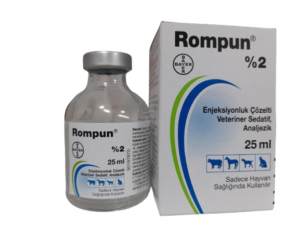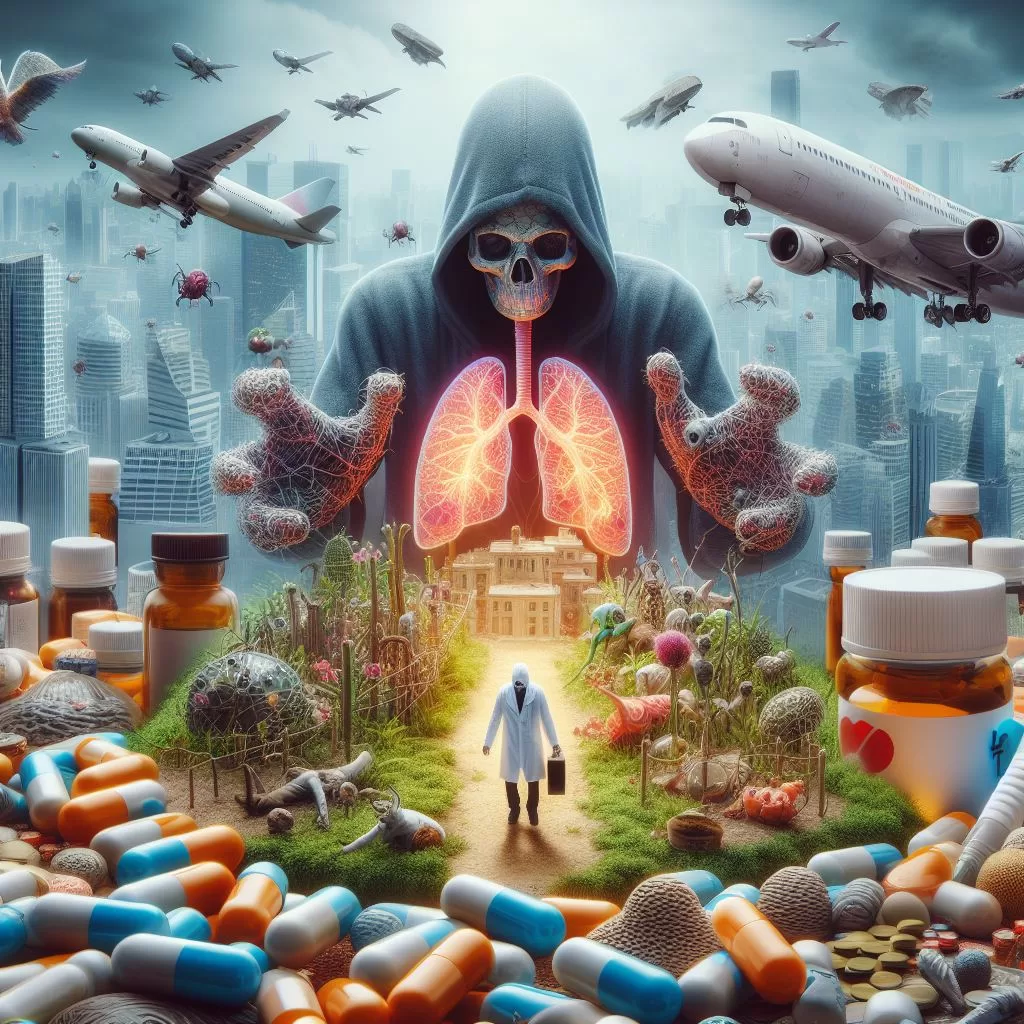Amid escalating drug-related health crises in the United States, a new threat is emerging, sparking growing concern among public health experts and authorities: xylazine, nicknamed the “zombie drug”. This substance, diverted from its original veterinary use, is spreading on American streets, worsening the opioid crisis and presenting unique challenges to public health and safety.
This article explores the insidious nature of xylazine, its alarming rise as a street drug, and the measures taken to combat its spread, and highlights the crucial importance of prevention and education in this battle.
I. What is xylazine?

Xylazine is known by the sinister nickname “zombie drug”. Initially designed to calm animals, this substance finds a new use that alarms health professionals and affected communities.
1. Veterinary Origins, Fatal Diversion:
Xylazine emerged in the 1960s as an anesthetic solution for animals, from horses to deer, before being authorized in the United States in 1972. Its transformation into an injectable drug is relatively recent, dating from the 2000s, often in combination with fentanyl to intensify the effect of this opioid for long hours.
2. Destructive Effects on Humans:
Human consumption of xylazine leads to a range of deleterious effects. Users seek to achieve a state of dissociation, floating between euphoria and altered consciousness. However, the consequences go far beyond, including muscular paralysis, hallucinations, and serious psychological disorders, pushing some into an almost zombified state by their slow and clumsy steps.
3. Alarming Medical Consequences:
On a physical level, xylazine threatens life through a critical reduction of vital functions and can lead to extremely serious skin lesions. In the most extreme cases, these lesions develop into bedsores, gangrene, or even require amputation, marking bodies and lives forever.
4. A Spreading Epidemic:
The spread of xylazine is not confined to the United States. Tests are being carried out to detect its presence in drugs, demonstrating the urgency of the situation. Xylazine enriches the deadly opioid cocktail, making emergency response and detoxification treatments even more complex.
5. Call to Action:
The xylazine crisis in the United States is a wake-up call for the entire world. As seizures of drugs laced with xylazine increase, deaths from opioids continue to climb. The situation requires a rapid and coordinated response, combining prevention, education, and innovative treatments to stem this destructive wave.
Xylazine, with its nickname “zombie drug,” is much more than an emerging threat. This is a major public health challenge, which calls for increased vigilance and concerted action. With the global community already battling the opioid crisis, xylazine adds additional urgency to this battle. It is time to act to protect the most vulnerable among us and prevent the spread of this devastating substance.
II. The rise of the “zombie drug”:
1. A public health crisis:
The rise of xylazine, nicknamed the “zombie drug,” underscores a growing public health crisis. Introduced on the black market in the early 2000s, its consumption by humans has increased significantly since 2020, exacerbated by its low cost and easy availability. Its danger lies in its very narrow therapeutic range, where a low dose is ineffective and a high dose can be fatal. Often, it is mixed with substances like fentanyl, increasing the risk of overdose without the consumer being informed.
2. The effects of xylazine:
The effects of xylazine on humans vary from profound sedation, causing a feeling of floating and disconnected from reality to hunched and slowed gaits, making users appear “undead.”
These analgesic effects relieve pain and relax muscles, leading to euphoria but also hallucinations and states of stupor.
Risks include a critical reduction in breathing, blood pressure, heart rate, and body temperature, as well as severe skin damage which can lead to necrosis and, in the most extreme cases, amputation.
Xylazine mainly comes in powder or tablet form and, when consumed regularly, can cause serious skin problems, abscesses, necrotic ulcers, and soft tissue infections. Despite its status as a sedative and not an opioid, administration of naloxone is recommended when there are signs of overdose due to its opioid-like effects, although there is no specific pharmaceutical antidote to xylazine.
3. Effects on the human body:
The “zombie drug” gets its nickname from the devastating effects it can have on the human body, particularly on the skin, with abscesses and sores that, in the most extreme cases, can require amputation of limbs. Added to many drugs like fentanyl, cocaine, heroin, and methamphetamine, xylazine poses a risk even to those who do not know they are exposed to the substance.
Faced with this growing threat, the FDA has taken steps to control the illegal importation of xylazine into the United States and prevent its non-veterinary use, highlighting the urgency of a coordinated response to stem its spread and protect public health.
III. Measures taken against xylazine:
In response to the growing threat posed by xylazine, known as the “zombie drug,” the United States Food and Drug Administration (FDA) has taken decisive action to restrict its illegal importation and prevent its use not a veterinarian. These actions are specifically aimed at limiting the illegal entry of active components of xylazine and finished products containing this substance while preserving its availability for legitimate uses in animals.
Xylazine, although not an opioid, poses considerable dangers, as it can critically reduce breathing, blood pressure, heart rate, and body temperature. People who inject drugs containing xylazine can develop serious skin lesions and dead or rotting tissue that can easily become infected and, if left untreated, lead to amputation.
To combat this crisis, the FDA has increased oversight of xylazine imports, giving FDA agents the authority to detain shipments that appear to violate the law. This includes a review by FDA staff of specific evidence provided by importers that the incoming product is properly labeled, not adulterated, and intended for legitimate veterinary use.
These initiatives are part of a broader effort to address the issue of xylazine mixed with illicit drugs, with the FDA continuing to use all tools at its disposal and collaborating with the Drug Enforcement Administration (DEA) as well as with other federal, state and local agencies to counter these illicit activities and protect public health.
These measures taken by the FDA against the illegal importation of xylazine aim not only to reduce the availability of this substance on the black market but also to raise awareness among the public and health professionals of the dangers it represents. By working closely with federal, state, and local partners, as well as animal health stakeholders, the FDA is working to ensure that xylazine remains available for legitimate veterinary use while preventing its diversion for illicit uses.
IV. The importance of prevention and education:
Prevention and education play a crucial role in combating the spread of dangerous substances such as xylazine, often nicknamed the “zombie drug.” This agent initially used as a sedative for animals, has found misuse in humans, with potentially fatal consequences. Faced with this threat, the importance of prevention and education manifests itself at several levels, highlighting the need for coordinated action to protect public health.
1. Education as the first line of defense:
Public education is fundamental. Educating individuals about the dangers of xylazine, from health risks to signs of overdose, is essential to preventing use and potential harm. Information campaigns can take many forms, from community workshops to online campaigns to school programs.
These initiatives should aim to demystify substances, provide clear facts, and encourage healthy behaviors.
2. Prevention through Collaboration:
Effective prevention requires close collaboration between public health authorities, health professionals, and communities. This cooperation can facilitate the rapid exchange of information on the emergence of new substances, consumption trends, and the best intervention strategies.
Authorities can also play a crucial role in regulating and monitoring the distribution of potentially harmful substances, thereby reducing their availability.
3. Risk Reduction Strategies:
In addition to education and prevention, risk reduction strategies are vital. This includes providing mental health and addiction treatment services, offering needle exchange programs, and distributing naloxone, an antidote to opioid overdoses. While xylazine is not an opioid, clinicians often combine its use with other substances, turning naloxone into a potentially life-saving tool.
4. The Role of Media and Technologies:
Media and new technologies provide powerful platforms for the dissemination of information. Social media, mobile applications, and websites can be used to quickly and effectively educate the public about the dangers of xylazine. However, the information shared must be accurate and based on verified data to avoid misinformation.
The fight against xylazine highlights the critical importance of prevention and education in public health. By informing communities, collaborating at all levels, and adopting harm reduction strategies, it is possible to protect individuals from the devastating effects of this dangerous drug. The commitment of everyone, from health authorities to citizens, is essential to stem the spread of xylazine and save lives.
Conclusion:
The growing threat of xylazine in the United States, nicknamed the “zombie drug,” presents an alarming challenge to public health and community safety. As we have explored, understanding the nature of xylazine, recognizing its rise as the substance of choice among street drugs, and identifying steps taken to combat its spread are crucial steps in addressing this crisis. However, it is becoming increasingly clear that the key to truly stemming the tide of this dangerous drug lies in prevention and education.
By investing in awareness campaigns and strengthening resources for drug education, we can hope to protect individuals from the ravages of xylazine and move toward safer, healthier communities. The fight against “zombie drugs” requires a collective response, where every action counts to save lives and prevent future tragedies.

